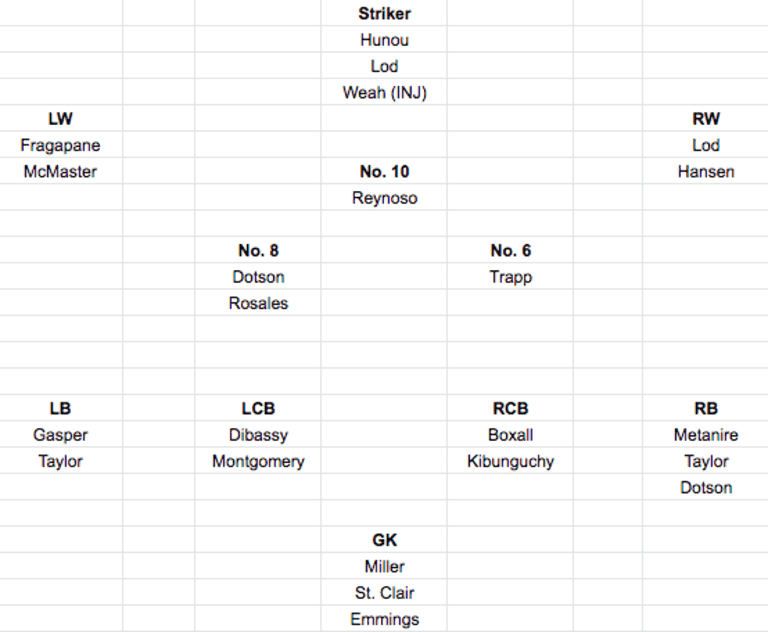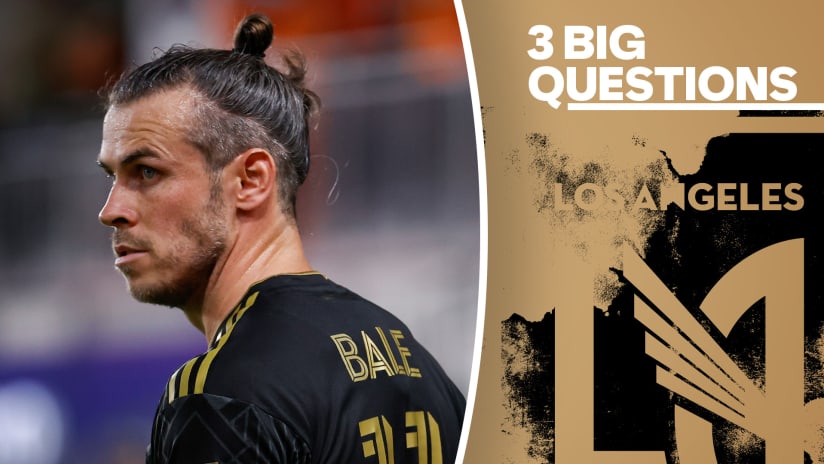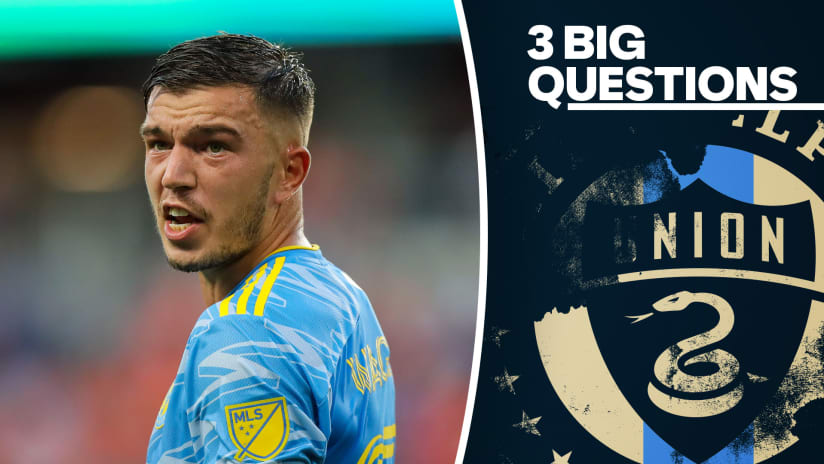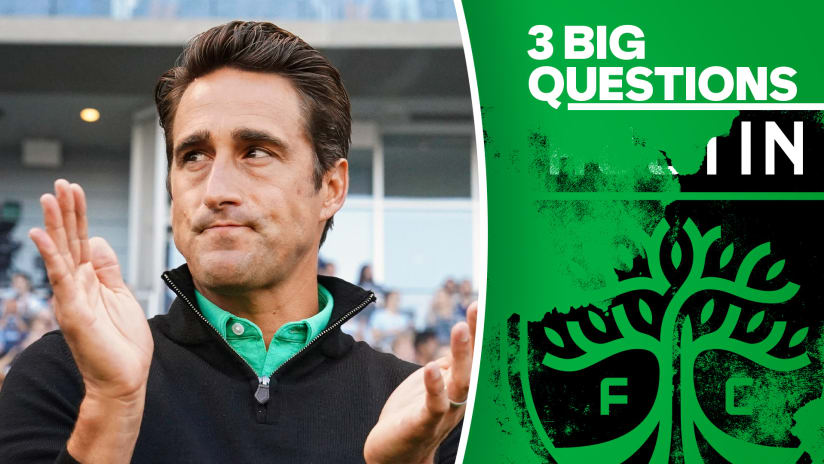The 2021 MLS regular season has long been over and the unforgiving nature of single-elimination playoffs has sent more and more clubs officially to the offseason, joining 13 clubs that missed the playoffs.
Here, we'll cover three questions for every team as the offseason begins in earnest. With most clubs already announcing their roster decisions, the depth charts will look lighter than the first crop of 13. Think of it as an exit interview, if you will. Matt Doyle, as always, has you covered on his preeminent season-in-review for each club. Read that, too.
He has gifs. It’s tough to beat gifs.
In 2020, Minnesota United FC were mere minutes away from reaching MLS Cup. They had a lead against the Seattle Sounders in the second half of the Western Conference Final but ended up losing.
Expectations were high, then, for 2021. Most of that squad was returning, plus the promise of further key signings (who arrived) was on the horizon. But this year didn't get off to a good start, losing each of their first four games. They were playing catch-up all year long and fell short of hosting a Round One playoff game. They were eliminated by the Portland Timbers on the road.
Still, they made the playoffs for a third successive season and retain a roster filled with in-prime, high-end talent. They can go in a couple different directions this winter.
First off: There are allegations around star midfielder Emanuel Reynoso in Argentina involving an armed encounter. Minnesota released a statement saying they are aware of the alleged incident and are taking the matter seriously but have no further comment. Reynoso, through his lawyer, has denied any involvement. That is a cloud hanging over the Loons' offseason until there's a resolution.
With Jan Gregus departing Minnesota, the Loons have an open DP spot alongside Reynoso and Adrien Hunou.
Dependent on if they plan to make multiple U22 Initiative signings this winter (more on that in the second question), Minnesota can either sign a DP with no restrictions (and use only one U22 Initiative slot) or sign a Young DP/someone who can be bought down with allocation money (and use three U22 Initiative slots). As they head into the offseason, Minnesota will plot where to best allocate their resources.
Currently, they have two DP spots (Hunou, Reynoso) and two players who hit the budget at above max charge (Robin Lod, Franco Fragapane) in the attack. They didn't particularly light the league up with goals, so adding another difference-making attacker is an option.
A like-for-like replacement for Gregus in central midfield is another option. They are currently light on numbers, but Wil Trapp and Hassani Dotson are two starting-caliber options already in place. In central defense, Bakaye Dibassy and Michael Boxall are the clear first-choice partnership, and teams rarely use DP spots in defense anyway.
That's a lot of words to essentially say: TBD! There are cap/roster resources sprinkled in most key areas already in the assumed first-choice XI. But...
... The depth is thinned after the club announced their roster decisions. One way to address that with discretionary spending is using all three U22 Initiative slots. The value here is that acquisition costs don't factor into a player's budget charge and they hit the cap at a low number (no more than $200,000, depending on age).
If the front office goes that route, it comes with inherent risk. For all of Adrian Heath's success in Minnesota, young players coming through and making an impact in the first team hasn't been something to point to. Dotson and Chase Gasper are the two best positive examples.
Dotson was young at 21 in his rookie season, but Gasper was 23 that year. Both had time playing college soccer. Still two developmental success stories, no doubt, but that's largely it at the moment and they weren't teenagers. Young DP Thomas Chacon didn't work out. Heath deemed that Patrick Weah wasn't ready for the first team last year (before he tore his ACL recently, costing him most of the 2022 season).
Honduran youth international Joseph Rosales was signed late in the summer and got his first MLS minutes, but given the timing, he wasn't expected to make a big impact in 2021. Minnesota were also in advanced talks to sign Brazilian forward Rafael Navarro as a U22 Initiative signing for next year, but nothing is done there.
Minnesota's success has come with largely a veteran-based core. Perhaps 2022 is the chance for a new trend.
On paper, Minnesota have a balanced and strong attack.
Reynoso is among the very best creators in the league. Hunou is an in-prime DP with a decent scoring record in Ligue 1 (these profiles of players usually increase their goals output and flourish in MLS). Robin Lod has 16 goals in 40 appearances over the last two seasons, a solid output for a secondary option on the wing. Franco Fragapane had 14 goal contributions in 19 matches during his debut MLS season.
Yet, still, they scored the third-fewest goals in the Western Conference. What gives? Is it as simple as Hunou's initial scoring struggles?
Minnesota underperformed their expected goals by 10.67, second-worst in MLS (behind only LAFC). The chances were there, the goals were not. Hunou underperformed his xG by 3.64 and was one of six Loons players who underperformed xG by a goal or more (Reynoso, Dotson, Fragapane, Ethan Finlay and Juan Agudelo).
The good news? Debut seasons in MLS are notoriously not straightforward. Throw in a pandemic, plus Hunou going months between playing for Rennes then Minnesota, and perhaps next season is better. Some were ready to write off Adam Buksa after 2020, then he became one of the league's leading goalscorers in 2021 and a regular with Poland's national team.
If a jump in form doesn't come? Minnesota need a secondary scoring option to step up, be it internally or externally.

Couple thoughts:
- The starting XI looks defined and strong, but this offseason will be important to add rotational/depth pieces.
- Tyler Miller or Dayne St. Clair in goal?
- Can this attack produce better than last year or does it need more options?












